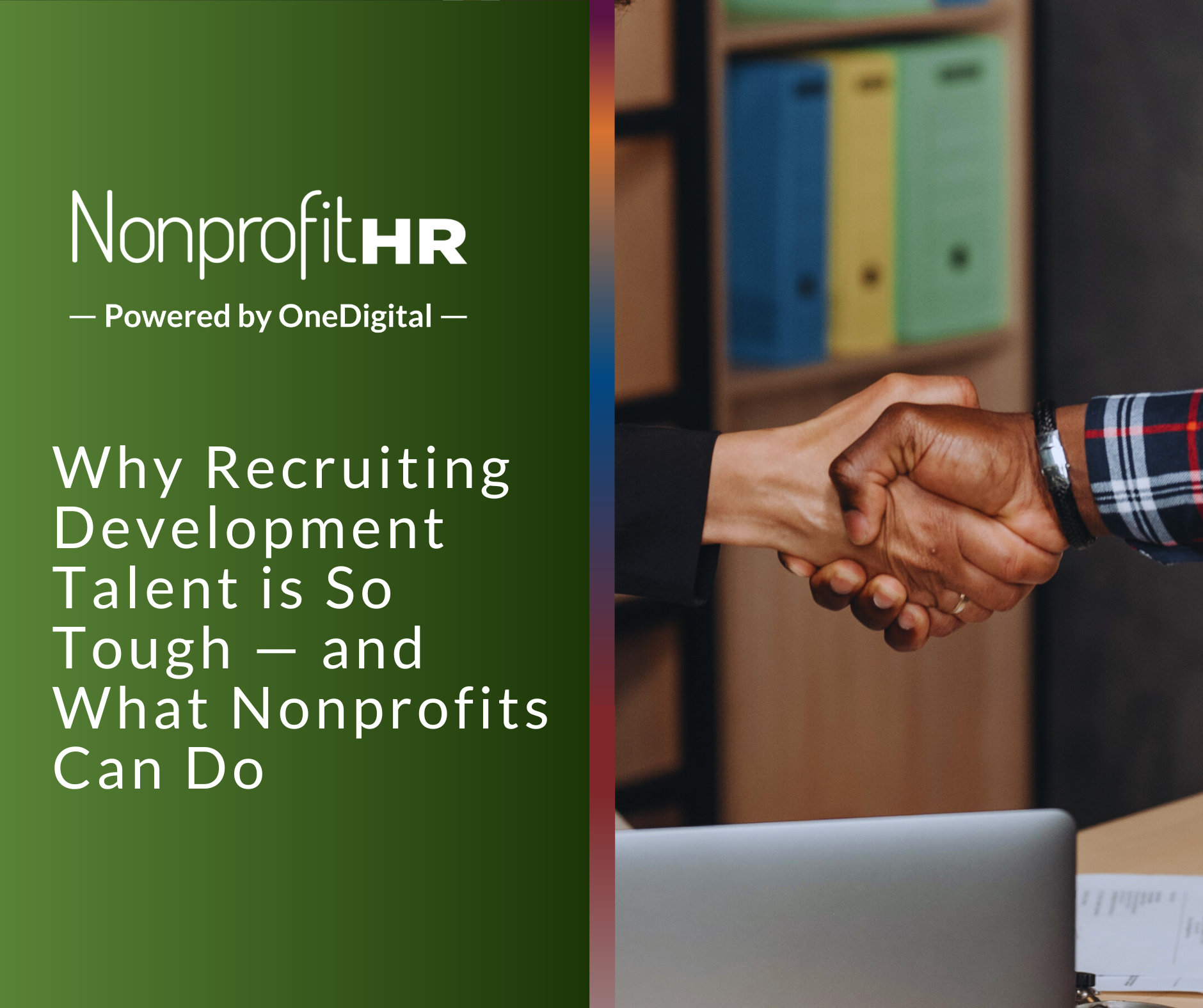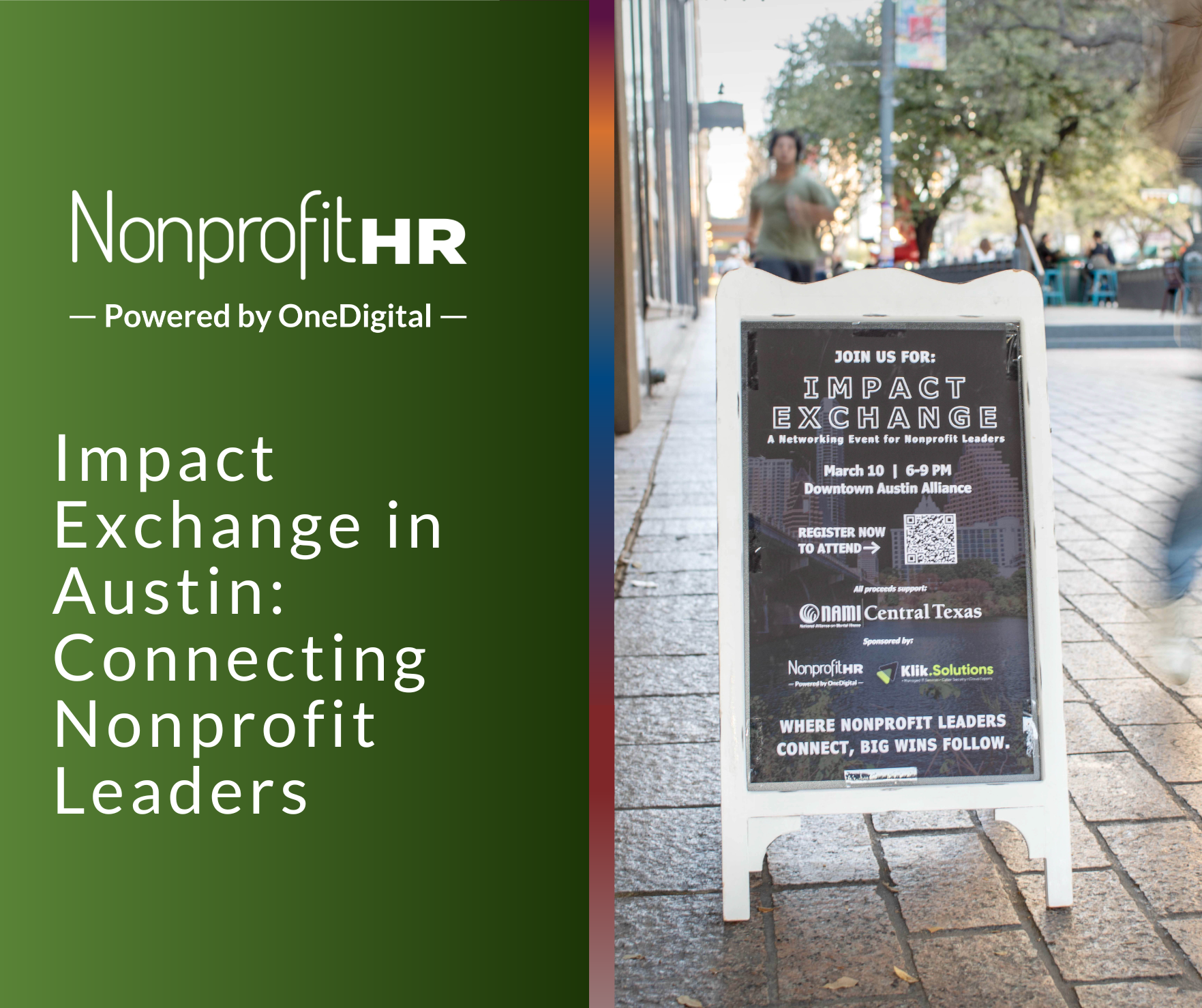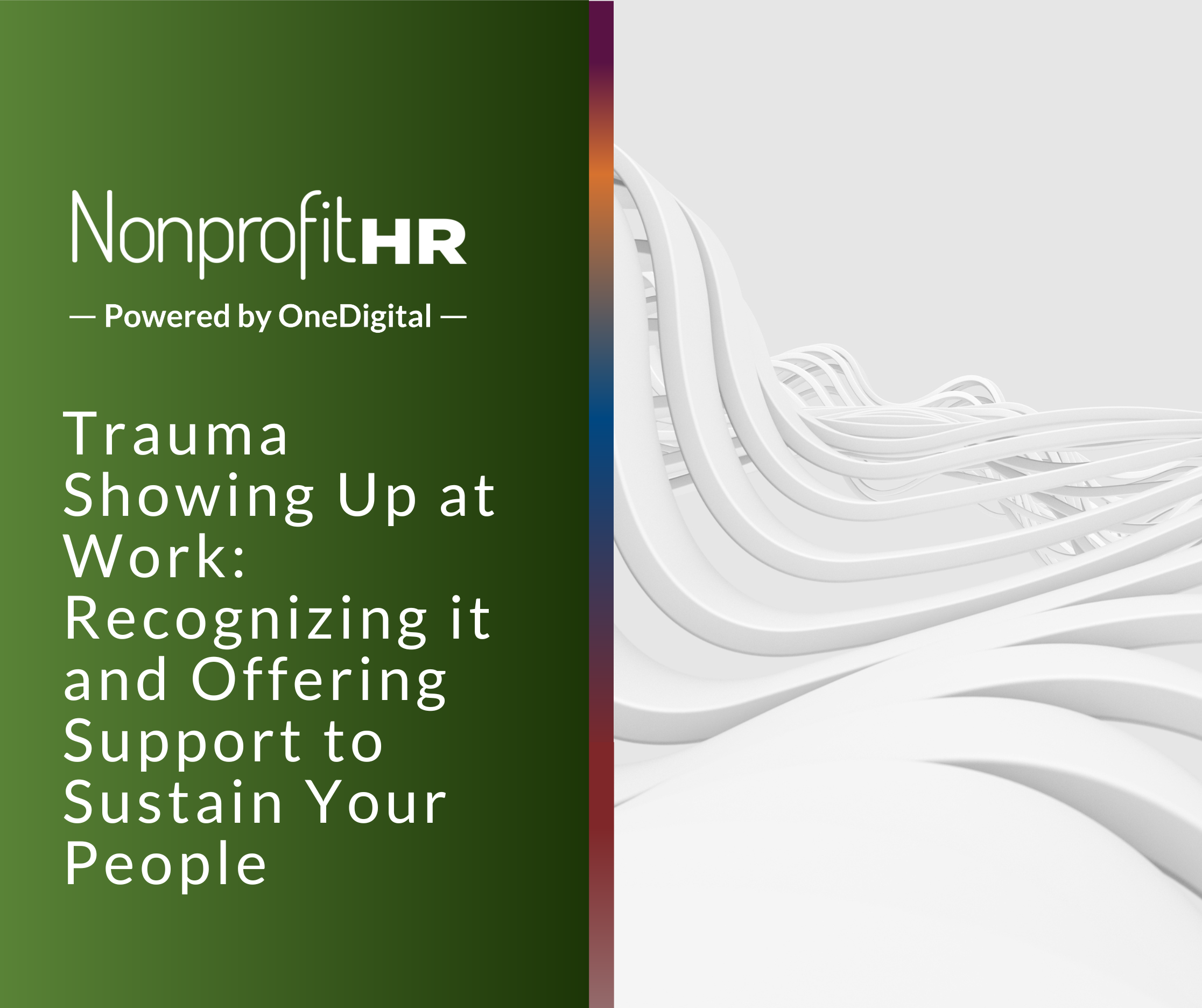WTOP: 5 ways nonprofits can…
While the support for equity, diversity, inclusion and justice (EDIJ) has been increasingly more prominent in the past few years, some organizations have started to experience “diversity fatigue” or feeling burnt out from discussions about EDIJ. Initially, there were many strategically crafted public EDIJ statements and a focus on amping up diverse talent initiatives, but for many organizations, EDIJ efforts have slowed.
Much of organizations’ initial focus was on one-off efforts like unconscious bias training or a singular “fireside” or “brave space” conversation. Nearly three years later, it appears as though some organizations are cautiously backing away from their public commitments made in 2020 and some are defunding and deprioritizing their EDIJ initiatives altogether. With a recession looming, some organizations are considering reducing their EDIJ budget or delaying activities.
This commitment fatigue can stem from a lack of perceived progress around EDIJ-related goals, unrealistic goals or a compliance-based approach to EDIJ. And it can be fought by transparently providing EDIJ-related data, employing continuous feedback and sharing opportunities, such as in decision making, for employees to shape their work experience.
Indeed, over half of respondent organizations in our 2022 DEIJ Practices Survey indicated a lack of DEIJ has impacted their organization. So instead of deprioritizing EDIJ efforts, this is the time to double down on workplace equity and inclusion. Findings from over 200 studies show that diversity in business leads to greater innovation, customer service, employee engagement and long-term growth (Bersin, 2020). It can often take three to five years to see sustained and systemic organizational change after beginning an EDIJ journey, certain organizations are just now approaching that critical point in time to see the fruits of their efforts. Therefore, it is even more critical to press forward.
Making an intentional commitment, regardless of how difficult the journey may be, is essential to long-term progress. An intentional path to sustainable EDIJ success is achieved by allocating time, space and resources as well as keeping EDIJ integrated into all parts of the organization. And while it can feel like EDIJ is simply a “nice to have” option, sustaining EDIJ efforts can prove to be beneficial for a variety of reasons.
3 reasons why organizations should keep EDIJ efforts going strong
- EDIJ benchmark data can help tell a compelling story. Capturing key EDIJ metrics also informs important insights around employee satisfaction, training opportunities and communication focuses. Understanding how employees with varying social identities experience workplace culture can help create more organizational improvements and foster a stronger sense of belonging, which is a critical component of employee engagement. Measuring equity, diversity, inclusion, justice and belonging can also uncover key insights about staff engagement. According to the Center for Talent Innovation, “when people feel like they belong at work, they are more productive, motivated, engaged and 3.5 times more likely to contribute to their fullest potential” (Twaronite, 2019). Gathering data that assesses belonging amongst multiple identity groups can assist in pinpointing inequitable systems and processes. An increased sense of belonging for staff has the potential to create transformative opportunities for employee and organizational growth.
- Talent attraction and retention. Potential talent is often more attracted to organizations that transparently share their mission and values. If inclusion or diversity is a publicly stated value without any visible EDIJ strategy communicated, there is a risk of being perceived as performative without real commitment. Similarly, millennials who now make up the largest segment of the workforce are seeking to hear more voices and ideas from different people to help foster transparency and inclusivity (Patrick & Washington, 2018). Thus it is no surprise to see that over half of responding organizations in our 2023 Nonprofit Talent Management Priorities Survey indicated attracting/hiring diverse talent as a top talent acquisition priority. For organizations aiming to be even more proactive to workforce shifts, “83% of Gen Z candidates said that a company’s commitment to diversity and inclusion is important when choosing an employer.” (Monster.com, 2020).
- Investing in a thoughtful EDIJ strategy leads to transformational change. When thoughtful and well-strategized EDIJ initiatives are adapted, transformational change can occur. Transformational change is an organizational change that can dramatically reshape culture, systems and processes. While transformational change can often be complex, it can dismantle harmful systems and create a more equitable future inside the organization. Additionally, setting strategy means setting success metrics for the areas organizations aim to impact. For example, if your organization aims to attract and retain more women, people of color or other demographic groups, how will success or progress in those areas be measured to ensure accountability? (Buss, 2022).
While this “business case” for starting or continuing on the path of implementing EDIJ within organizations can be transformational, there are some common barriers that can derail EDIJ progress.
Common barriers to pushing EDIJ commitments forward
Lack of allocated resources. One of the top reasons why EDIJ efforts do not move forward is an absence of commitment or funding. EDIJ is often treated as a bonus effort instead of a key business function that requires proper staffing, a fair budget and strategic goals (King, 2023). When EDIJ is not a key organizational priority, there tends to be less engagement and accountability toward strategic EDIJ efforts. EDIJ initiatives can be sustained when there is a clear commitment from leadership and substantive resources devoted to moving progress forward. Resources should include staff time and expertise, coupled with budgetary line items.
Focus on quick-fix solutions. Fixating on a single microaggression or a TED Talk centering around racial injustice does not have the same effect as a long-term EDIJ strategy. “For unconscious bias training to be useful, leaders must approach unconscious bias training intentionally as one part of their larger EDIJ strategy” (Luc, n.d). And with 73% of organizations indicating that DEI is a top learning and development/training effort for 2023, it is vital to plan a sustainable strategy around those efforts. A singular EDIJ training or EDIJ survey is an honorable starting place, but it is the larger strategy that will produce tangible organizational change so additional long-term activities and touchpoints must be identified for sustained success.
Once potential barriers have been addressed and corrected, it is important to ignite momentum on EDIJ-focused initiatives. It is crucial to know where to put the gas on efforts and keep the EDIJ train moving. Sometimes it can be difficult to make progress when it is unclear where to start or form an initial EDIJ strategy. Here are some actions to consider when restarting EDIJ initiatives.
How to reignite EDIJ initiatives
Reassess the EDIJ budget and assign an executive sponsor. Some of the most common reasons that EDIJ work stalls or stops are a lack of executive sponsorship and unrealistically low budgets. Before pressing play on any EDIJ effort, it is important to rally executive/leadership support and allocate a substantive budget for deploying tools and outside consulting support. As we know in organizations, the most important initiatives and goals of the organization receive explicit funding. EDIJ needs the same attention as a marketing campaign, recruiting strategies and accounting. It is a vital business function that needs both budget and executive backing. Executive sponsorship should emphasize organizational accountability, a critical component of an ongoing and successful EDIJ engagement.
Gather data, establish benchmarks and celebrate wins. The foundation of a sustainable EDIJ commitment involves an understanding of current data around belonging, diversity, equity and inclusion. Whether it is an EDIJ-focused survey or an organization-wide equity assessment, creating benchmarks will help measure the effectiveness of all efforts put forward. Allocating resources to capture qualitative and quantitative feedback should be a focus for keeping the momentum moving for EDIJ across the organization. This is your organizational starting point to build intentional strategies that create long-term growth and success. Once these have all been established, it is critical to openly celebrate your EDIJ achievements as an organization. Demonstrating your growth as a firm, noting hiring gains of diverse staff and utilizing vendors of different identities are ways to share how your EDIJ journey has impacted your organization.
Infuse EDIJ into strategic initiatives. For some organizations, EDIJ is often perceived as a function of HR or a stand-alone function that does not touch any other initiatives. This results in equity work being siloed as a “bonus” effort instead of an integrated and foundational function across the entire organization. A healthy approach to keep EDIJ top of mind is to embed EDIJ-focused goals and objectives in every department and integrate them as an accountability metric. Adding goals for inclusive communication in the marketing department, organization-wide trainings, pay equity for HR and recruiting can move the needle faster.
Prioritize transparent communication around EDIJ progress. Making the effort to clearly and openly share progress on EDIJ-related efforts can build trust within organizations and help add context to why and how decisions are made. For example, adding mandatory EDIJ training without any preemptive communication can cause skepticism and mistrust. Transparency about upcoming events, initiatives and benchmarking progress through frequent communication such as community town halls, newsletters and continuous anonymous feedback help employees feel an increased sense of belonging and inclusion.
Deciding to add more fuel to your organizational EDIJ efforts instead of putting out the fire is not always a simple task, but it is necessary for a fairer and more harmonious workplace. Making the conscious choice to gather data, listen to employee feedback and craft custom initiatives can often take months and years of effort. Ultimately investing in the well-being and nurturing of organizational talent involves a serious commitment to EDIJ, which is beneficial to all employees.
Learn more about how to start your EDIJ engagement with Nonprofit HR for 2023.
Contributing Authors
Citations:
Bersin, J. (2021, February 11). Elevating Equity: The Real Story of Diversity and Inclusion. Retrieved December 13, 2022, from
https://bersinacademy.com/blog/2021/02/the-real-story-of-diversity-and-inclusion
Buss, D. (2022, March 9). 12 Ways Companies Are Boosting their DEI. Retrieved on February
7, 2023 from
https://www.shrm.org/resourcesandtools/hr-topics/behavioral-competencies/global-and-cultural-effectiveness/pages/12-ways-companies-are-boosting-their-dei.aspx
Luc, K. (n.d.). How effective is unconscious bias training? Retrieved from Culture
Amp website.
https://www.cultureamp.com/blog/unconscious-bias-training
King, M.P. (2023, January 18) Three Reasons Why Diversity, Equity And Inclusion Efforts Fail.
Retrieved on February 14, 2023 from
Monster.com, (2020). What workforce diversity means for Gen Z. Retrieved on February 14,
2023 from https://hiring.monster.com/resources/workforce-management/diversity-in-the-workplace/workforce-diversity-for-millennials/
Patrick, C & Washington, E. (2018, November 30). 3 Ways Millennials Can Advance Workplace
Diversity and Inclusion. Retrieved November 7, 2023 from
https://www.gallup.com/workplace/245084/ways-millennials-advance-workplace-diversity-inclusion.aspx
The Surprising Power of Simply Asking Coworkers How They’re Doing. Harvard Business
Review. (2019, February 28). Retrieved December 14, 2022, from
https://hbr.org/2019/02/the-surprising-power-of-simply-asking-coworkers-how-theyre-doing

































